St Lawrence’s Church, Kirkby Morland
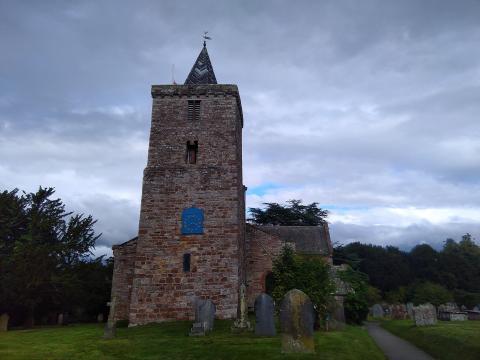
St Lawrence’s Church, Kirkby Morland, in Cumbria, claims to have the only Saxon tower in England’s north-west, a boast to which I am unable to offer challenge. There are Saxon structures still standing, but none towered. It is in possession of a fine set of Early English style windows, as well as later medieval features. For a man who enjoys architecture and church history, I was delighted to call.
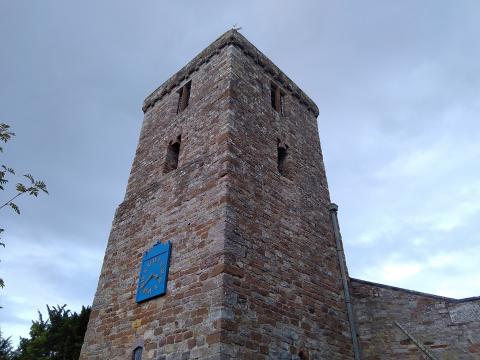
The font dates itself to that dreadful year in which the best puritan clergy were ejected from the state church, leaving behind others with less integrity or who were happily content to merely read prayers and dry homilies.
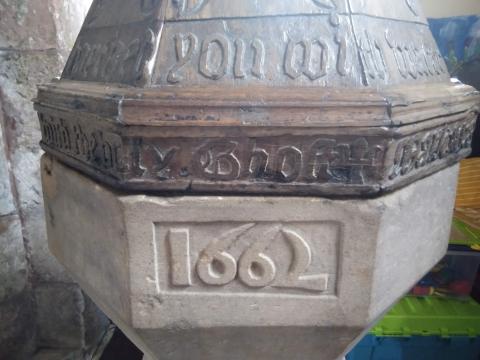
Interestingly carved wooden faces appear in the chancel, which are thoroughly charming. I think it likely that they were members of the congregation or those in authority over them. Here, perhaps, is the parish priest:
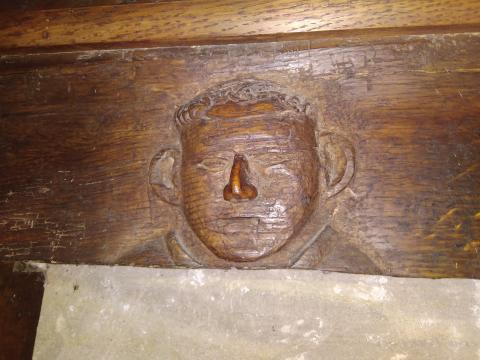
Below, his similarly big-eared colleague. Perhaps he was a good listener.
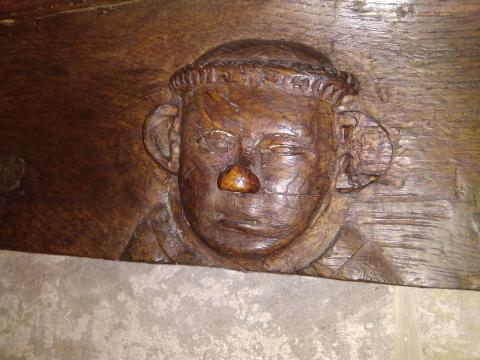
Here the King (Edward III at a guess, or possibly an older Henry VI), inbetween his trips abroad to slaughter the French:
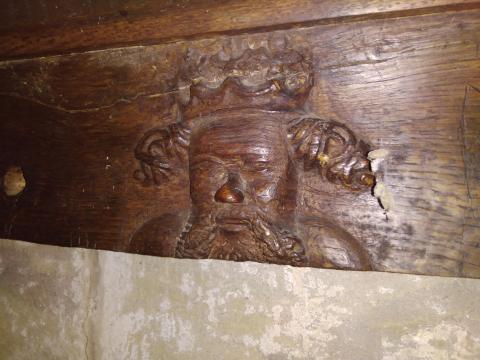
And a prince (Edward the Black?), or his son, the dandyish King Richard II (or Edward IV if the above is Henry VI):
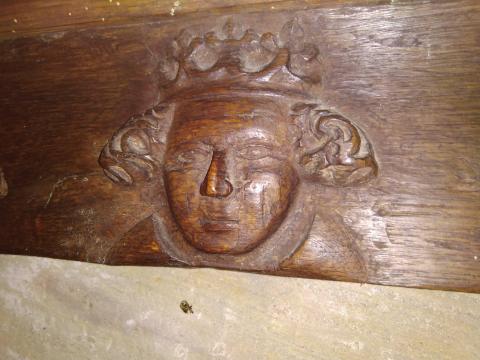
I do not think they had hippies back then, but this long-haired fellow might have been a hermit:
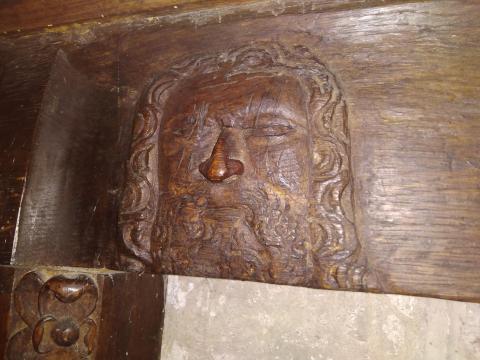
Along with his twin brother with the more bulbous nose.
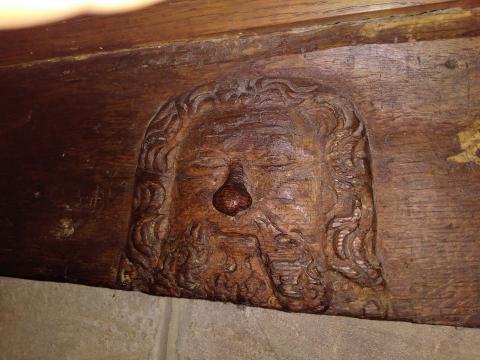
As well as a younger man with long, fashionable hair; perhaps this was Steve, the youth worker.
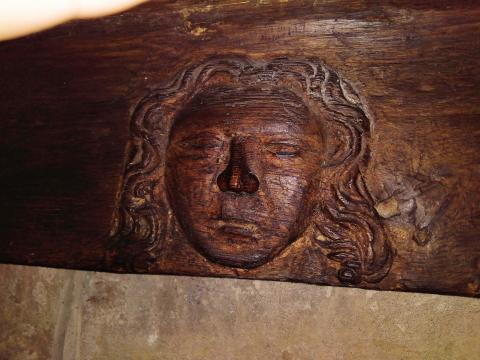
This fellow also seems rather stylish, though the craftsman has spent no little effort recreating his nose:
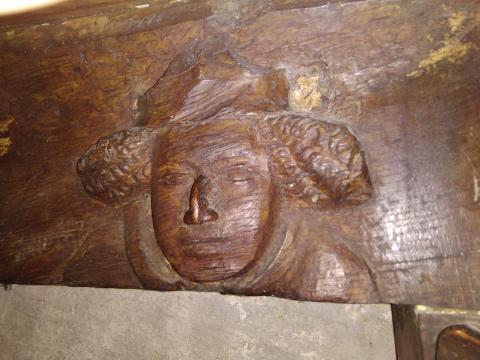
This chap has possession of a book (a Bible?), but does not seem inclined to open it. So a good medieval Catholic.
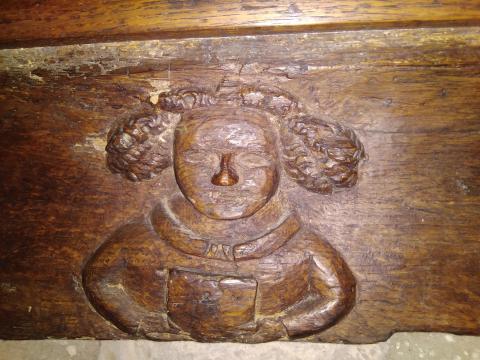
Here, a pipe-playing angel accompanies the choir:
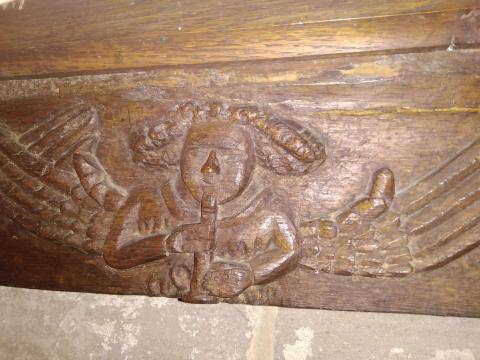
But one holds closed his book and his mouth, like the truculent youth, above.
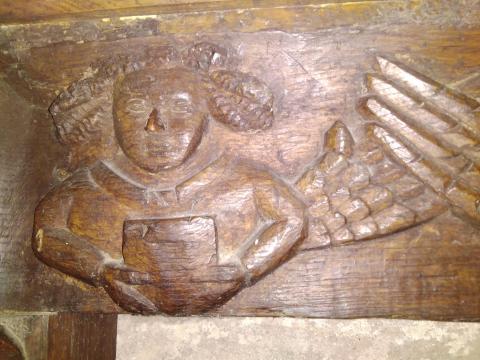
At the other end of the scale, we have a demon. Or is it the parish cat?
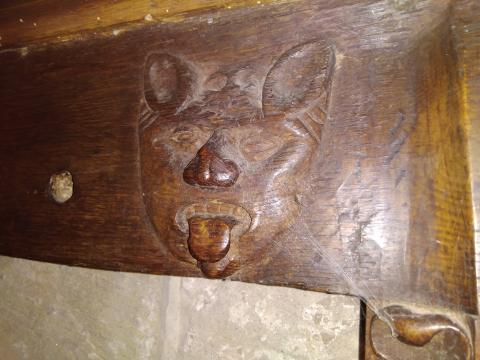
Also remarkable are some circular holes in the thick tower walls, now infilled with glass. Whether these were to let air in, or to allow a view of those approaching the church without admitting a dagger thrust in return, I know not. This northern district would have been subjected to much Scottish depredation; these holes may bespeak a greater wisdom than we might otherwise credit.

Despite the changing architectural, ecclesiastical and theological fashions, several things at St Lawrence's Church strike me as modern or, more accurately, timeless. The first is the parish poor box. This one, dated 1648, reminds us that the poor will always be with us, as the Lord Jesus observed:
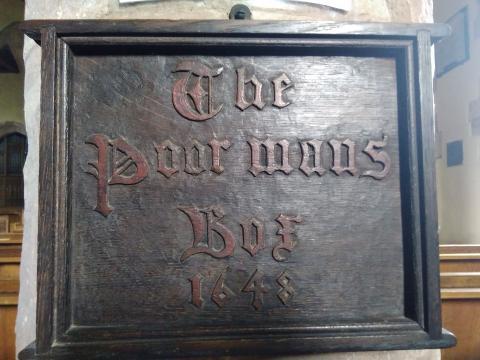
Note also the good hasp to prevent the hands of the less poor from helping themselves:
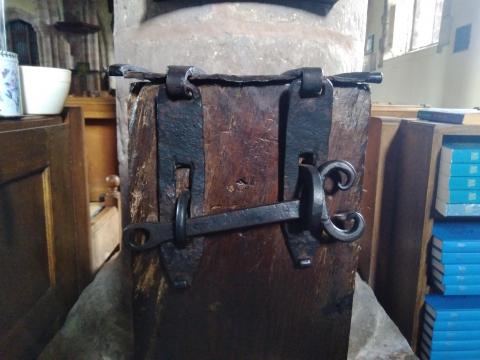
Secondly, note the steps leading down from the main door into the church, which is rather unusual. For all the Church's grand history and exciting heavenly vocation, to join it is to condescend and humble oneself, sitting next to folk we might not otherwise choose as our companions.
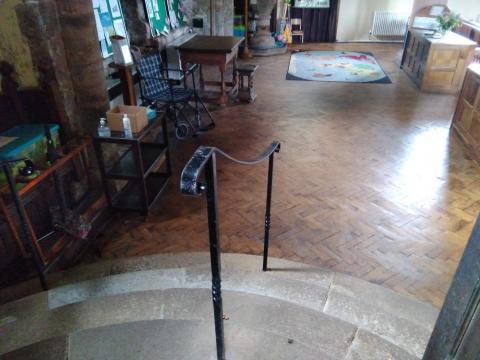
So why do we go? Why do we dedicate our lives to a body that it so obviously imperfect and flawed? This is why:
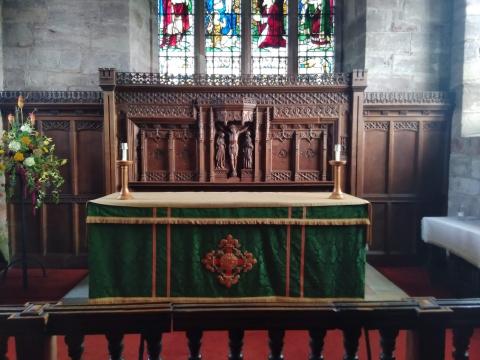
- Log in to post comments


 Sunday Worship 10.45am & 6.00pm
Sunday Worship 10.45am & 6.00pm